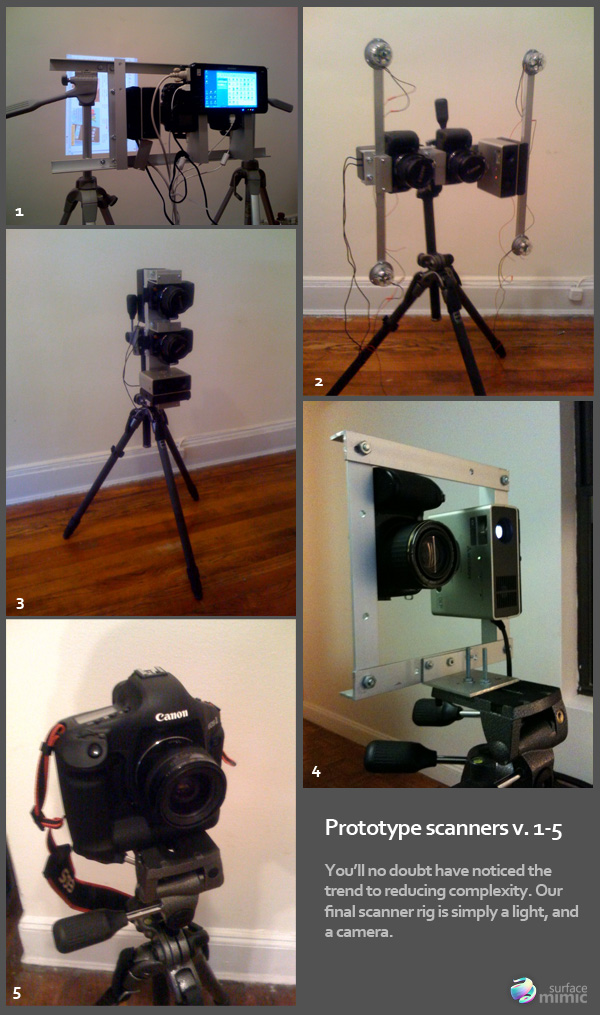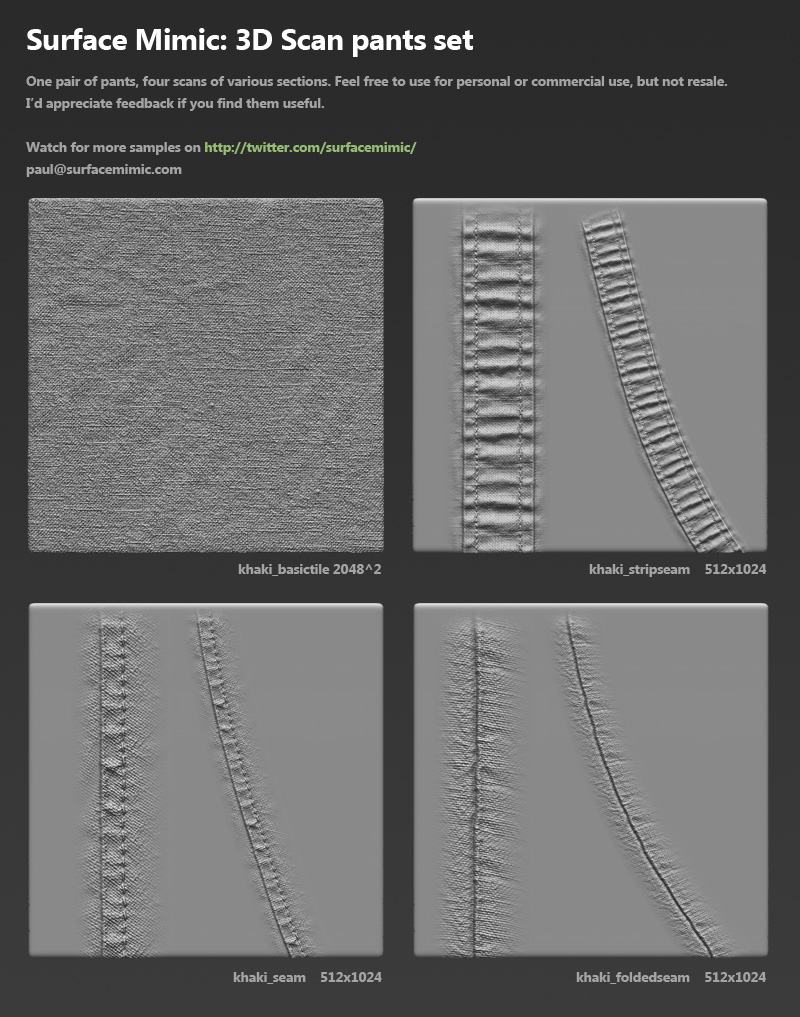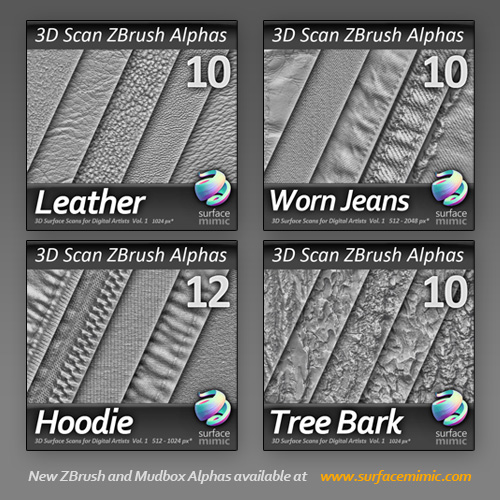Thanks for the comments guys. Testure, to answer your question I actually wrote up a page, since a lot of people are curious about the tech.
The link can be found here, but I’ll summarize below with pictures.
The method is called “Photometric Stereo“. The most basic configuration is a camera and a light. I take multiple shots of the same subject with the light at different angles to the surface in each photo.

The photos are fed into a program that uses a lot of math and RAM, and out pops a normal map. The normal map is generated via an equation (I = pN.L, Intensity = color x Normal (dot) Light Vector). Then I take the normal map and integrate the surface into a height, or displacement map.
You might assume its like crazybump, but its completely different because the real normal map is captured from the differences in light intensity across each photo.
Once I have the displacement map, I make them into tiling alphas, the way you would a plain old photo.
I’ve kept an amusing visual record of old prototypes at various stages. The modern scanner is a boring old camera, and portable light, and an 8 ball on a stick for light calibration. Portability and flexibility was a big factor, and unwieldy rigs tended to be heavy, and break often.







